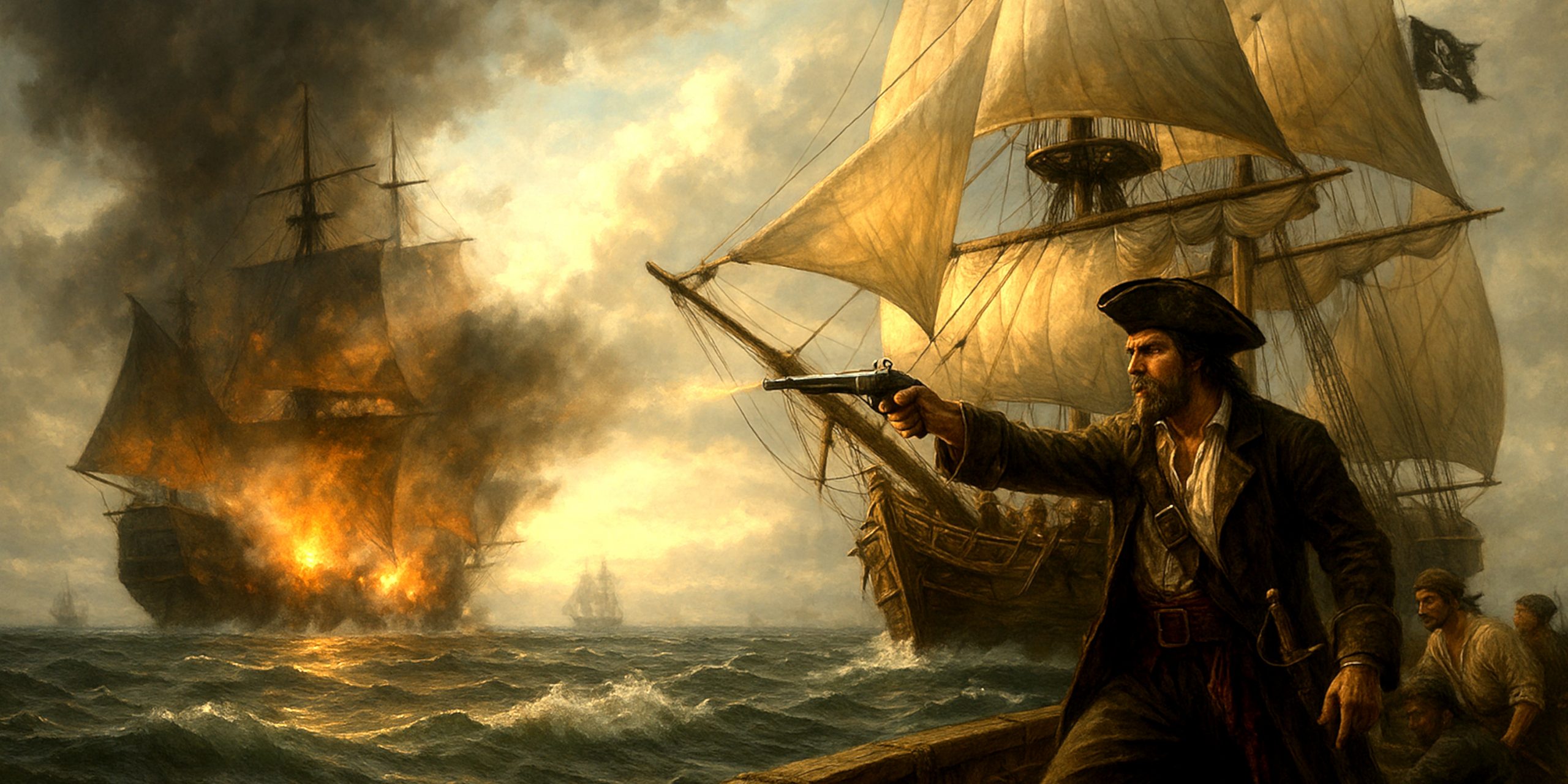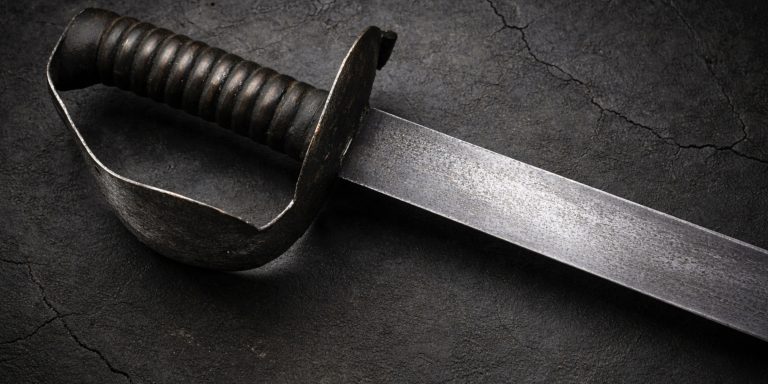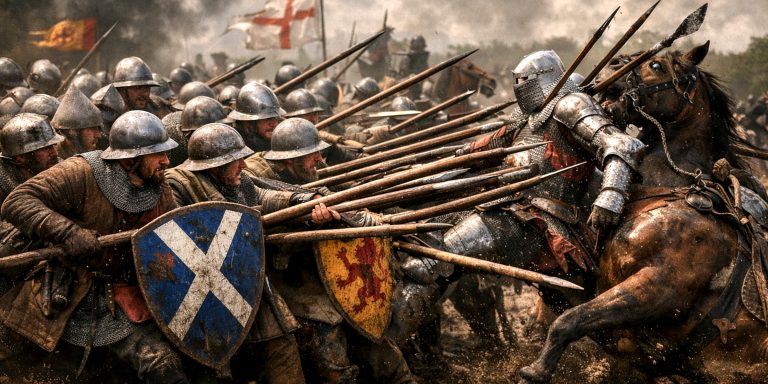
Few pirates have sailed so swiftly from obscurity to myth as Thomas Tew. In the late 17th century, this Rhode Island privateer turned outlaw carved his name into the Indian Ocean with a single, dazzling raid. He was celebrated in taverns from Newport to Madagascar, toasted as the “Pirate Prince,” and whispered about in the halls of the East India Company as a menace too bold to endure.
And then, as swiftly as he rose, he vanished in a haze of blood, gold, and contradiction.
Early Life and Path to Piracy
Little is certain about Tew’s origins, though most agree he hailed from Newport, Rhode Island, around 1649. Like many mariners of his age, he cut his teeth as a privateer, licensed to attack the enemies of England. It was a profession where patriotism and piracy often blurred depending on who was counting the coins.
In 1692, Tew obtained a privateering commission from the governor of Bermuda. His supposed mission was to attack a French factory in Gambia. The problem was that the real money wasn’t in Africa’s western coast, it was in the East.
Somewhere off the Cape of Good Hope, Tew’s crew mutinied or, depending on whose diary you trust, agreed in democratic fashion to change course. His ship, the Amity, turned east for the Red Sea, and Thomas Tew abandoned legality for fortune.
The Raid that Made a Legend
Tew’s fame rests on one glorious haul. In 1693, the Amity intercepted a Mughal convoy returning from the pilgrimage to Mecca. The convoy was protected, but Tew’s men, armed with cutlasses, muskets, and swivel guns, made quick work of a large merchant ship known to the English as the Fateh Muhammad.
The plunder was staggering. Contemporary sources describe each of Tew’s 60 crewmen walking away with between £3,000 and £4,000, roughly a king’s ransom in the 17th century.
Captain Charles Johnson, in his notorious 1724 A General History of the Pyrates, quotes Tew as saying before the attack, “We are all in the same boat… a merry life and a short one shall be my motto.” It may be apocryphal, but it suits the man’s reputation: daring, fatalistic, and cheerfully doomed.
Weapons and Tactics
Tew’s crew favoured the same brutal simplicity that defined most pirate warfare. Firepower and fear were the great levellers of the sea.
Typical Weapons Used by Tew’s Crew:
- Cutlasses: Broad, short-bladed swords ideal for boarding actions.
- Flintlock pistols: Quick-drawing and deadly at close range, often carried in pairs.
- Muskets: Used to sweep decks before boarding.
- Grenadoes and swivel guns: Small cannon for devastating point-blank fire.
Unlike naval fleets, pirates prized agility. The Amity was small and fast, perfect for ambushing merchantmen and escaping larger pursuers.
Ships and Voyages
The Amity, originally a sloop of about 70 tons, was Tew’s instrument of legend. Sleek and single-masted, it could be manned by a modest crew and manoeuvred quickly. It had enough cannon to intimidate, but not so many as to slow it down.
After his first voyage, Tew returned triumphantly to Rhode Island, where he was received like a hero rather than a criminal. He purchased property, mingled with local elites, and may even have entertained thoughts of retirement.
That dream lasted less than a year. By 1694, he was back at sea, drawn once more to the Red Sea trade.
Treasure and Bounty
The spoils of Tew’s first voyage became legend among seamen. Gold, silver, pearls, and jewels from the Mughal ship filled his hold. It is estimated that the total value of the raid exceeded £100,000, a colossal sum for the time.
That single act transformed the Indian Ocean into a new hunting ground for Western pirates, sparking the so-called “Pirate Round.” Men like Henry Every and William Kidd would soon follow, inspired by Tew’s riches.
Tew himself reportedly invested some of his bounty into land and social standing in Newport, proof that a pirate could, for a fleeting moment, live like a gentleman.
Battles and Final Voyage
In 1695, Tew joined a coalition of pirates led by the infamous Henry Every. Their goal: to intercept the Mughal fleet once again near the Red Sea. This time, fortune failed him.
Accounts vary, but most agree that Tew’s Amity engaged one of the Mughal convoy ships in a disastrous skirmish. A cannonball struck him in the abdomen, “tearing open his bowels,” according to one lurid report. He died instantly, and his crew surrendered.
Contemporary chroniclers such as Captain Johnson immortalised this grisly end, writing that “his men were so discouraged by the loss of their commander, they yielded without further resistance.”
His death was the end of a myth in the making, but not the end of his legend.
Legacy
Tew’s brief career left a disproportionate mark on piracy’s golden age. He embodied the myth of the gentleman buccaneer: bold, lucky, and doomed. His success directly inspired others to follow the “Pirate Round,” raiding rich Mughal ships from Madagascar to India.
In Newport, he was celebrated as a local son who thumbed his nose at empire and returned home with pockets of gold. In London, he was cursed as the man who drew the wrath of the Mughal Empire upon the East India Company.
It is perhaps fitting that his body was never recovered. Like all good pirates, he vanished into the same sea that made him famous.
Contemporary Quotes
“We are all in the same boat… a merry life and a short one shall be my motto.” – attributed to Thomas Tew, 1693
“Tew was slain in the beginning of the action… his men, disheartened by his death, yielded without resistance.” – A General History of the Pyrates, 1724
“Tew’s success opened a floodgate to the East, where every rogue with a sail and a pistol thought himself a prince.” – Anonymous East India Company official, c. 1696
Where to See Artefacts
Though no confirmed relics of Tew survive, several museums capture the world he inhabited:
- The Whydah Pirate Museum (Massachusetts): Displays weapons and treasure from roughly the same era.
- National Maritime Museum (Greenwich): Holds examples of East India trade goods and Mughal artefacts similar to those Tew once plundered.
- Newport Historical Society: Contains documents on Rhode Island’s privateering past, including possible references to Tew’s time ashore.
Seven Swords Takeaway
Thomas Tew’s story is a parable of greed, courage, and fleeting fortune. He may have lived only one true pirate voyage, but it was enough to echo across centuries. In the end, Tew was neither hero nor villain, just a man who decided that law and luck were both negotiable, provided the wind was right.
It is hard not to admire him, even as one imagines him bleeding out on the deck of the Amity, the Indian sun glittering on a sea of stolen gold.
Watch the documentary:



